Often brightly coloured, these life forms are neither plant nor animal, and come in a fantastic array of different shapes.
We do not recommend picking or eating fungi (several are very poisonous!).
Please leave them where you find them, so that others can enjoy their beauty.

Jelly ear fungus: Elliot Neep
Jelly ear fungus
So named because it has a fleshy, velvety feel and similar shape to the human ear!
Grows on elder all year round.
Historic uses were as a remedy for sore throats, sore eyes and jaundice.

Beefsteak fungus: Faye Durkin
Beef steak fungus
Found on oak trees. This fungus changes colour with age from pink through to red then brown with red juice. When new the pinkish fungus can look like a tongue, and then when fully developed it resembles a raw beef steak, thus the name. Beef steak fungus is edible, but bitter, not like steak!
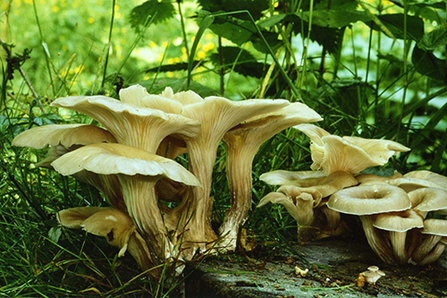
Oyster fungus: A. Riddell
Oyster mushroom
Usually found growing on deciduous, not coniferous, trees.
Common and edible.

Fly agaric fungus: Mike Snelle
Fly agaric
Distinctive looking red fungus with white warty spots.
Poisonous and hallucinogenic.
Historically used as an insecticide, thus the name.
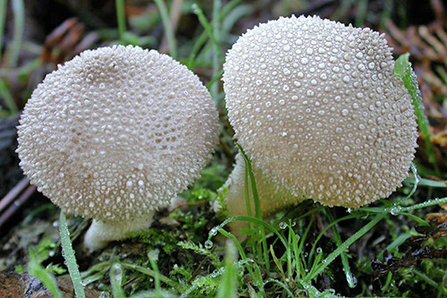
Mosaic puffball: Steve Aylward
Mosaic puffball
Grows on grassland and sandy heath.
New fruits are edible.
Historically used as an antibiotic.

Dryads saddle fungus: Roger Fay
Dryad's saddle fungus
Grows on dead stumps or logs.
Usually seen in spring but sometimes autumn.
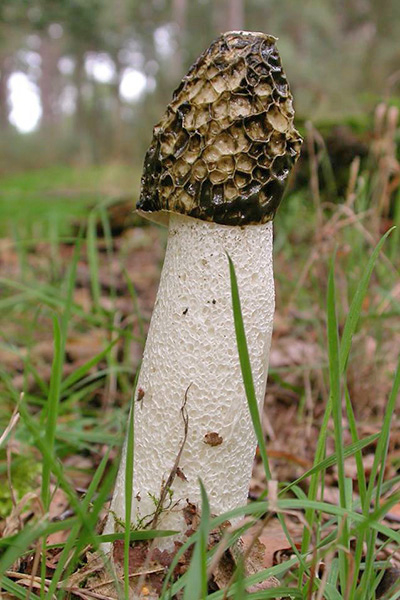
Stinkhorn
Stinkhorn
A tall, white fungus with a slimy, dark olive colored conical head.
Has a foul smell, like rotting flesh, which attracts insects which distribute the spores.
Despite the stink it is not poisonous.
Found near rotting wood in summer to late autumn.
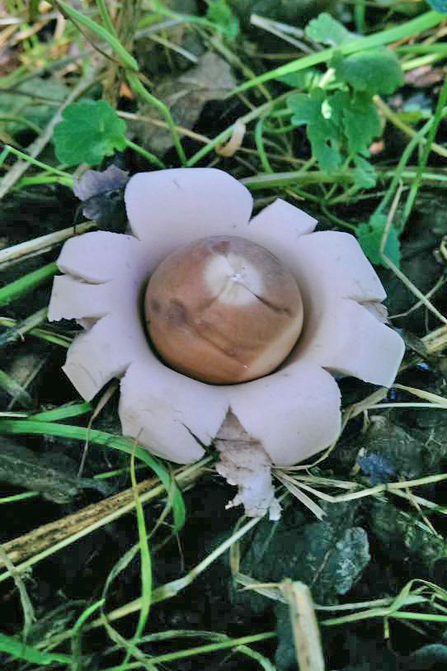
Earth star fungus
Earth star
When young the fungus resembles a puffball, but then the outer layer splits to form a characeristic star shape. This reveals the darker spore sac in the centre. Usually found under deciduous trees in late summer and autumn.
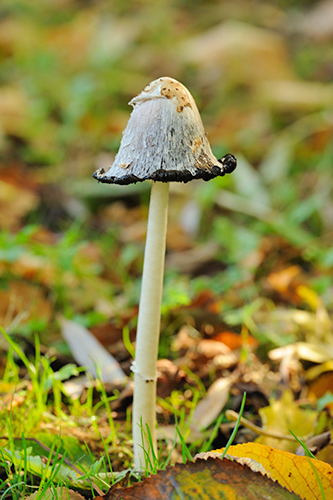
Shaggy inkcap fungus: Amy Lewis
Shaggy inkcap
Usually found on grassland.
When they first emerge they are cylindrical, and then the bell-shaped caps open out.
Gills underneath can secrete a black liquid, thus their name.
The mushroom also turns black and dissolves shortly after picking.

Chicken of the woods fungus: Les Bins
Chicken of the woods
Tastes like chicken, thus the name.
Forms large brackets - some as large as 45 kg.
Most commonly found on oak, but can also grow on eucalyptus, yew, sweet chestnut, and willow.
Causes brown rot on the host tree.

Amethyst deceiver fungus: Mike Taylor
Amethyst deceiver
Found in both deciduous and coniferous forests.
New specimens appear lavender in colour thus the name, but the colour soon fades making them harder to identify.
We recommend the following nature reserves for fungi spotting:
Arger Fen & Spouse's Vale Bradfield Woods Combs Wood Groton Wood Lackford Lakes Knettishall Heath Reydon Wood
